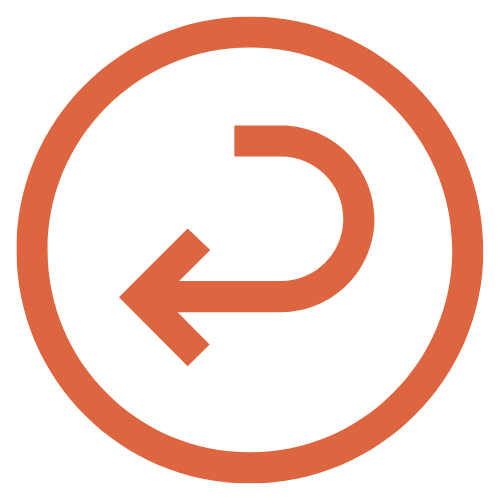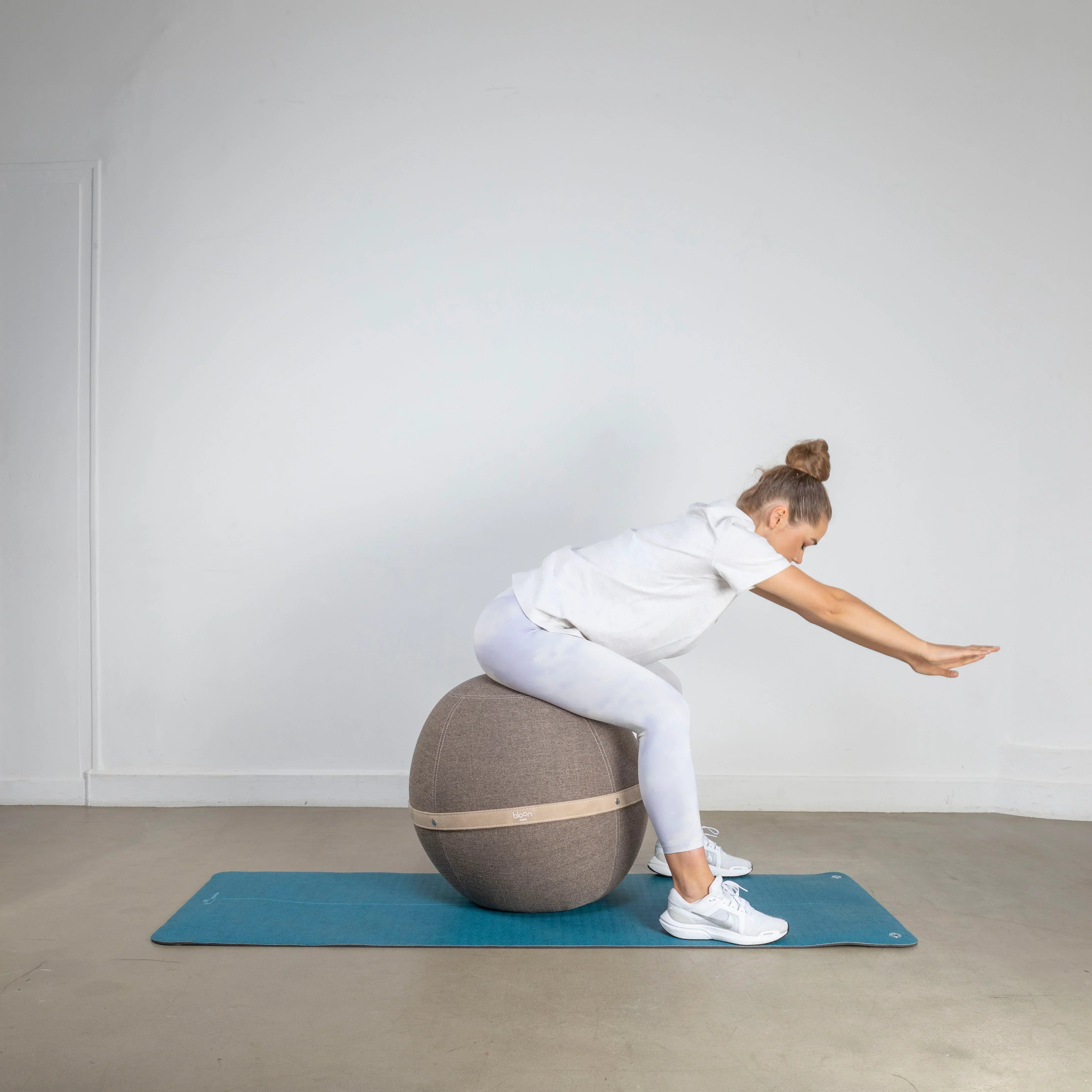Sitting all day at work is not without risks to your health and well-being. Prolonged immobility and a sedentary lifestyle are responsible for postural disorders, MSDs (musculoskeletal disorders), fatigue, and stress . They also affect your concentration and productivity.
According to the WHO, the estimated cost of global inactivity between 2020 and 2030 is 300 billion US dollars .
Recommended by the WHO, active breaks could be the ideal solution to combat a sedentary lifestyle and add rhythm to your workdays .
Discover the physical and psychological benefits of active breaks for employees , their advantages for the company and how to integrate them into your work routine.
What is an active break at work?
Many employees spend hours inactive, sitting in front of a screen. While taking breaks is essential for disconnecting, the gap in benefits between passive and active breaks is considerable.
Unlike passive breaks, active breaks are intended to stimulate the body and mind .
The term “active pause,” derived from HIIT (high-intensity interval training) and SIT (sprint interval training), originally refers to short, light exercises performed during recovery periods.
In the office, dynamic breaks consist of a short interruption, often between 2 and 15 minutes, dedicated to physical or mental activities . We stop working for a few minutes to break from our static sitting position: stretching, walking, breathing, etc. The longer lunch break can also be used as an active break, for example, to take a sports class or go for a few laps in the pool.
They are an effective solution to combat the effects of a sedentary lifestyle and improve your well-being at work .
Recent research from the WHO (World Health Organization) recommends taking a 2-minute active break every 90 minutes to get moving.
Good to know: The French Labor Code provides for a legal break of at least 20 consecutive minutes for workdays of 6 hours or more continuously. Employees can use this break as they wish, either all at once or split into several micro-breaks throughout the day. Some collective agreements are even more favorable to breaks. Don't hesitate to check your company's provisions.
The benefits of an active break for employees
Active breaks help break away from a sedentary lifestyle and its harmful effects on employees' health . Several scientific studies show that short periods of activity are enough to trigger beneficial physiological reactions .
When we move, we restart the machinery, including blood circulation. Our body uses amino acids more efficiently to build muscle. This muscle activation keeps the metabolism more active throughout the day.
Active breaks also regulate stress, as they provide time for the body and mind to reconnect and recharge.
In this way, you give your body and mind a boost.
Reduction of fatigue

During a working day, breaks, breaking away from professional tasks for a few minutes, allow you to reduce fatigue and recharge your energy . Making these breaks dynamic promotes this energy boost.
Indeed, getting moving has multiple benefits, such as activating your blood circulation, your muscles and the oxygenation of the brain , which helps to reduce physical and mental fatigue resulting from prolonged sitting.
Prevention of pain related to a sedentary lifestyle
The benefits of active breaks for workers' physical health don't stop there. They also help prevent pain related to a sedentary lifestyle, such as MSDs (musculoskeletal disorders), joint tension, and circulatory problems (risk of cardiovascular disease). In this regard, national figures are clear: MSDs related to inactivity at work are the cause of 20% of workplace accidents and 87% of occupational illnesses.
Employees and remote workers spend long hours sitting motionless in front of a screen. Incorporating active breaks into the workday, with regular movement, helps combat the harmful effects of a sedentary lifestyle by boosting blood circulation, loosening joints, and reducing muscle and blood pressure.
Staying active at your desk helps improve posture, which prevents the risk of chronic pain in the back, neck and shoulders.
For those who work on screens, these breaks are also an essential respite for your eyes.
Reduced stress
Beyond the physical benefits, active breaks have a significant impact on mental well-being and cognitive abilities .
Even brief physical exercises help release endorphins, the feel-good hormones. They help you disconnect from your work tasks, refocus, and release the tension built up over the course of your workday. These short breaks therefore promote a return to calm, an improvement in mood, and a reduction in stress and anxiety , all essential for good psychological balance.
Another advantage is that the effect is immediate! Just a few minutes of physical activity are enough to let go and feel lighter and more relaxed.

Improved concentration
Less stressed, you get rid of mental fog and improve your cognitive functions. Indeed, active breaks are beneficial for concentration, attention, memory and creativity .
They help stimulate neuroplasticity , the brain's ability to reorganize itself. This way, you benefit from a better ability to solve problems that, just a few minutes before, seemed unsolvable.
The benefits of active breaks at work for employers
Contrary to popular belief, dynamic breaks are not only beneficial for workers, but also for their employers. Far from being a waste of time, these short periods of exercise represent a worthwhile investment for businesses .
Improved employee performance
Employees who are less tired and stressed are more focused and engaged. They benefit from mental clarity and are more likely to solve problems.
After an active break, returning to work is more fluid and efficient. Thanks to their increased energy, their performance, productivity, and engagement improve . More operational, employees adopt a more positive attitude to their tasks.
A tenfold increase in team spirit
For business life, team cohesion is essential.
In addition to limiting internal conflicts, this allows projects to move forward more quickly by avoiding friction when making decisions and taking initiatives, as well as encouraging a synergy of resources.
If you participate in these breaks with your teams, you strengthen the social bond with your employees and improve your employer image . This collective dynamic promotes a sense of belonging and a positive work attitude.
A reduction in costs
Active breaks help reduce the harmful effects of a sedentary lifestyle and mental health problems
So, as an employer, you observe a reduction in absenteeism and work stoppages .
Remember that MSDs are often referred to as the "business disease of the century," causing occupational illnesses and costly accidents for your company. The economic consequences can be disastrous. According to the French Health Insurance Fund for Salaried Workers, each work stoppage of more than 24 hours costs companies an average of €3,200. Added to this are indirect additional costs, such as the cost of replacing the employee on sick leave, equipment (in the event of an accident), administrative management, and loss of productivity and performance.

On the contrary, better employee productivity and concentration limits the number of errors and improves the quality of work and overall company performance, which is conducive to profits.
Ideas for active breaks to take at work
Whether you practice it alone or in a group, in the office or outdoors , active breaks are versatile . There are many ideas, which allows you to vary the pleasures in order to avoid boredom and weariness.
The important thing is to break up your work routine with activities that you enjoy and entertain.
Simple physical exercises to do alone in the office without equipment
Physically active breaks aim to improve blood circulation, reduce muscle tension and improve energy.
These short exercises don't require any special equipment, elaborate exercises, or large spaces. In fact, there are plenty of simple exercises you can do alone at your desk without any equipment:
- walk for a few minutes,
- stretching and self-massage,
- cardio and muscle strengthening exercises,
- joint mobility exercises,
- …
Find all our tips for exercising discreetly at the office here.
Simple stretching series

Stretching movements for the neck, shoulders, back and legs can be performed directly from your workstation .
Here are some simple stretches to prevent MSDs and boost blood circulation :
- tilt your head from one side to the other to relieve the neck,
- do shoulder rotations to relieve muscle tension,
- perform arm flexion and extension movements to relax the muscles,
- Alternately raise your heels and then your toes while remaining seated to promote venous return and prevent the sensation of heavy legs.
To learn more, read our article on stretches to do in the office to relieve tension and stress .
Brisk walk around the office
Even a short, indoor walk can work wonders.
If you want to stay at your workstation, you can quickly walk around your desk several times.
A few minutes of brisk walking is enough to get your blood circulating and oxygenate your brain.
Micro-cardio and muscle strengthening sessions
To get the machine going again and build muscle, there's nothing better than a few cardio and muscle strengthening exercises , such as:
- squats,
- going up and down stairs,
- push-ups against the wall,
- abdominals,
- or the “sit-stand” exercise which involves repeatedly standing up and sitting down without using the armrests of your office chair.
Joint mobility exercises
Don't forget your joints either, which are put under a lot of strain when you work on a computer.
Rotations of the shoulders, neck, wrists, ankles and hips help unlock joints , prevent stiffness , and develop suppleness and flexibility .
Another exercise, inspired by boxing, helps loosen your joints. It involves punching into the air, which benefits your arms, shoulders, and core and helps release accumulated tension and stress.
Active group breaks at the office
All of the exercises to be practiced alone in the office can also be done in a group to develop team cohesion and a sense of belonging .
More structured active breaks can also be organized by the company , for example, with team challenges, group games, workshops to discover sports at work, or weekly “vitality quarter hours.” The company can also offer spaces and classes for yoga, dance, fitness , etc.
Relaxation and meditation techniques

Active breaks are not only about physical exercise. They also aim to relieve the mind and improve mental health .
It is therefore interesting to integrate relaxation and meditation exercises into your routine, such as:
- Tai Chi or Qi Gong to release tension without sweating,
- yoga, beneficial to your physical and mental well-being,
- active breathing to oxygenate your body and reduce stress,
- guided meditation to refocus and revitalize your mind.
Mental and creative activities

Like relaxation and meditation techniques, mental and creative activities can invigorate the mind and improve your cognitive abilities .
These activities should help you disconnect from work without generating additional fatigue .
You can thus:
- do a puzzle or brain teaser to stimulate lateral thinking,
- listen to music or relaxing sounds to help you relax and escape,
- practice an artistic activity such as drawing, writing or coloring to relax while developing your creativity.
Stretching with ergonomic accessories
If you or your company are equipped with ergonomic accessories , you can expand the possibilities for active breaks.
Ball seats or sit-stand desks can, in fact, be used to perform stretches or other exercises .
In addition to promoting dynamic and ergonomic sitting , the Bloon ball allows you to do gentle stretches to relax your back, shoulders and hips. Find our top 10 exercises to do in the office with a gym ball .

Active breaks outdoors

When you have enough time and the weather permits, prioritize active breaks outdoors . The sun , a source of vitamin D, plays a vital role in preventing fatigue and stress . In addition, outdoor activities allow your eyes to rest, offering a wider field of vision than indoors.
Most of the above exercises can be done both indoors and outdoors.
For example, you can take advantage of your lunch break to go for a walk around the neighborhood or to the pool with colleagues to motivate each other.
Outside of breaks, work on the move
Staying active at the office isn't just about taking active breaks. You can also combat a sedentary lifestyle while working .
Dynamic sitting with the Bloon ball
The Bloon ball seat is a dynamic seat . This Active Seating requires you to maintain good posture and make micro-movements that engage your deep muscles while you sit.

Performing tasks on the move
Many professional tasks can also be performed on the move , such as taking phone calls and holding meetings while standing or walking.
Instead of communicating with your colleagues via chat or email, go to their office. Avoid the elevator and always take the stairs.
All these little things, when repeated on a daily basis, have a significant impact on your physical and mental health .
How to integrate these breaks into your workday?
Lasting between 2 and 15 minutes, or even longer, active breaks are easy to integrate into your workday .
It can be a personal initiative or your company's .
Organizing your active breaks as an employee
Even if the company does not provide active breaks, nothing prevents you from making your work breaks more dynamic on a personal level .
To help you integrate them into your workday, don't hesitate to schedule them directly in your calendar like any other appointment. You can set reminders via an alarm on your phone, an app, or directly in your work calendar.

Planning and consistency are key. Ideally, you should give yourself a 5-minute break every hour or 10 minutes every two hours to practice a few movements at your workstation or outdoors, alone or with colleagues.
While you may feel guilty at first because many people think that "moving" is like "wasting time," remember that this perception is wrong. To overcome this psychological resistance, you can start with shorter breaks and gradually increase their duration. Focus on discreet movements at your workstation.
Vary your activities to avoid monotony. For example, stretch at 10 a.m., walk at 1 p.m., and do some breathing and posture exercises at 4 p.m.
Promoting active breaks in your company as an employer
Support from management plays a crucial role in integrating active breaks into one's work routine.
However, this type of break represents a good investment for companies in the long term , a powerful lever to strengthen their productivity, dynamism and cohesion.
Employers can thus create an environment conducive to active breaks by creating dedicated spaces, improving ergonomics at work, organizing activities and raising employee awareness.
Provide a workspace conducive to active breaks
To facilitate active breaks, the company can set up dedicated spaces and equip itself with suitable furniture .
To this end, L'Oréal has set up a fitness room within its Parisian offices.

You don't need to invest that much to get started. Set aside spaces for relaxation and provide a few accessories, such as yoga mats and resistance bands.
Finally, favor ergonomic workstations, such as sit-stand desks or ball chairs. Bloon Active Seats allow you to stay moving while working and perform various stretches during active breaks.
Fostering a corporate culture based on well-being
Simply arranging the space isn't always enough to encourage active breaks. Employees need to be guided, feel supported, and feel less guilty.
It is necessary to create a permissive environment and raise awareness among managers and employees . Managerial involvement is essential.
Awareness can be raised through training, information sessions, workshops or communication materials (posters, newsletters, etc.) promoting the health benefits of active breaks.
The company can also motivate its employees and strengthen team cohesion by offering breaks and group activities .
Conclusion
Integrating active breaks into your workday is a simple gesture, with multiple benefits and accessible to all .
Whether it's stretching, a short walk, or guided breathing, active breaks help reconcile work and well-being .
As employees, they are a way to prevent pain, improve focus and recharge batteries . For employers , they are a great investment in your team's well-being and better performance .
Our Bloon chairs help you make your work environment more mobile and healthy!












